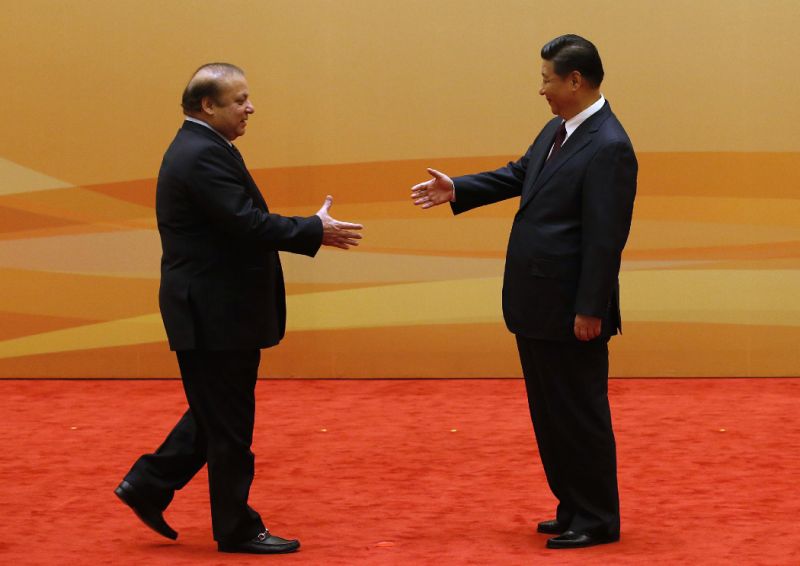
Sri Lanka’s premier called it a “once in a lifetime opportunity” but there were scores of Buddhist Monks protesting against conversion of their land into a Chinese Colony.
'CPEC to transform Pakistan into regional hub of socio-economic activities'
In Myanmar, anti-Chinese sentiments are growing as the Chinese-financed landmark $3.6 billion Myitsone Dam project would cause permanent harm to the dynamic of river settlements – destroying fishery stocks and displacing thousands of villagers.
The question of the hour is: What goes wrong with these billion dollar infrastructure investments by China?
China has emerged as the leading source of development assistance with a focus on infrastructure and energy sector. Developing countries with diminishing foreign reserves are eager to accept such investments without thoroughly working out the business case.
Now we see that in Hambantota, Chinese construction companies have built the world’s emptiest airport – not to mention other white elephants such as a five-star hotel, world-class convention centre and a cricket stadium. It is still unknown if these infrastructure investments provided any economic uplift to this poor region.
Similarly, in Myanmar, the wrong dam project was given the go-ahead and by the time the government realised its mistake, it was too late. Now if the project is scrapped, the government has to pay a whopping $800 million to Chinese against costs for conducting feasibility studies. Moreover, China is its biggest trading partner so backing-off from a megaproject deal might not be a good idea.
Similarly, Africans have reservations too, that China has taken proprietorship of their resources without transferring skills and technology and they take away primary goods to sells back manufactured ones.
Root cause of failed investments
The key to take away here is to realise that China is no doubt a specialist in building infrastructure but it is primarily the responsibility of the loan-recipient country to conduct extensive project appraisal and feasibility studies.
One solid symptom of a weak business case is a lack of any Private-Public Partnership (PPP) based arrangements in project financing. If the primary funding of any infrastructure project involves only sovereign guarantees with no Special Purpose Vehicle (SPV) to isolate project-based cash flows, it is a ‘red flag’ that the business case is not market-driven and not lucrative enough for investors.
Drawing parallels with CPEC
When it comes to finalising the scope of the China-Pakistan Economic Corridor (CPEC), the government seems to be kicking the can down the road. The portfolio cost has already increased to $62 billion as the brand CPEC has become a magic word that ensures acceptance of any project – relevant or not.
China catalyst for Pakistan's uplift: Shehbaz
The portfolio is losing its focus and costs are spiralling out of control. We don’t see any focus on designing a set of enabling policies that will ensure organic growth (not Chinese-led) of special-economic zones on CPEC routes. At the same time, we also see that projects with good business case (such as Tarbela extension and motorways) are not a part of CPEC but funded by the likes of Asian Development Bank.
Adopting a corridor approach to CPEC means that the government has to engage a wide array of regional stakeholder with possibly conflicting interests. The key strategic bits of the CPEC master plan should be based on our regional trading partners and identifying trade bottlenecks – both hardware (infrastructure) and software (policy blueprints).
This thought process should become a litmus test for proposing a new project in CPEC portfolio. For example, before approving a cricket stadium project as part of CPEC, it is important to ask the question whether developing a stadium add to the CPEC vision of eliminating trade bottlenecks.
The writer is a Cambridge graduate and is working as a management consultant.
Published in The Express Tribune, April 24th, 2017.
Like Business on Facebook, follow @TribuneBiz on Twitter to stay informed and join in the conversation.



1731655243-0/BeFunky-collage-(61)1731655243-0-165x106.webp)













COMMENTS (9)
Comments are moderated and generally will be posted if they are on-topic and not abusive.
For more information, please see our Comments FAQ